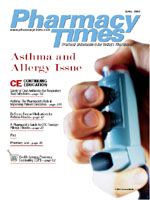Publication
Article
Pharmacy Times
Off-Label Uses of Medications
Author(s):
The Institute for Safe MedicationPractices (ISMP) recently receiveda call from a patientwith "neck pain"who was given a prescriptionfor amitriptyline. When hepicked up his prescription, the pharmacistgave him a medication informationleaflet, which mentioned,among other points, that the drug wasused to treat depression. The leafletdid not mention that the drug mightbe used to treat neuropathic pain orany other unlabeled indications.
After reading the leaflet, the patientcalled the pharmacist and asked whatthe medication was used for. The pharmacistreiterated that the drug oftenwas used for depression. Because theintended purpose of the amitriptylinehad not been communicated to thepatient or the pharmacist, the patientwas quite angry with his physician for"misdiagnosing"his condition. We atISMP told him that the medication maybe used to treat his pain syndrome, andwe advised him to call his doctor.
This case is very similar to anotherreport received by ISMP in which anelderly woman was prescribed amitriptylineto treat neurogenic painsyndrome. Her physician did not tellher why it was being prescribed, andhe did not write the reason for themedication on the prescription. Duringcounseling, the pharmacist toldthe patient that the drug usually wasprescribed for depression. Subsequently,the patient refused the medicationand accused her physician of believingthat her pain was all in her head!
Not knowing the purpose of medicationsalso can contribute to diagnosticerrors. A recent article (Oto M, RussellA, McGonigal A, Duncan R. Misdiagnosisof epilepsy in patients prescribedanticonvulsant drugs for other reasons.BMJ. 2003;326:326-327) described 2patients who were prescribed carbamazepinefor neuropathic pain withouta clear understanding that the medicationwas intended to treat this condition.After the patients developedblackouts, their treating physicians(who had not prescribed the carbamazepine)inferred from the drug therapythat the patients had epilepsy. Bothpatients underwent unnecessary diagnostictests and treatment.
Along with appropriate explanationsand instructions to the patient,prescribers should indicate the purposeof each medication on prescriptions,especially for "off-label"uses, aswell as for drugs whose names looklike or sound like other drug names.For example, a physician should write"take 1 tablet daily for pain."(TheDepartment of Health and HumanServices has confirmed that requiringa diagnosis or diagnosis code on a prescriptionrequires no separate specialauthorization because it falls withinthe treatment, payment, and healthcare operations category of the HIPAAprivacy rule.)
In addition, pharmacists should askpatients what their physician has toldthem regarding why they are to usethe medication, especially if the drugis used for multiple conditions oroften is used "off-label."If a patient isunaware of the condition being treated,consider using a statement such asthe following before assuming or statingwhat the drug is "normally"usedfor: "This drug could be used for manydifferent conditions, and withoutknowing the doctor's diagnosis, it isdifficult to determine why it was prescribed."Knowing the purpose alsohelps pharmacists to differentiate drugnames that look alike when handwrittenpoorly or sound alike when spoken.Very few drugs whose names lookor sound like others are used for thesame purpose.
Dr. Kelly is the editor of ISMPMedication Safety Alert!Community/Ambulatory Care Edition.
Report Medication Errors
The reports described here were receivedthrough the USP Medication Errors ReportingProgram, which is presented in cooperationwith the Institute for Safe MedicationPractices (ISMP). ISMP is a nonprofit organizationwhose mission is to understand thecauses of medication errors and to providetime-critical error-reduction strategies to thehealth care community, policy makers, andthe public. Throughout this series, theunderlying system causes of medicationerrors will be presented to help readers identifysystem changes that can strengthen thesafety of their operation.
If you have encountered medicationerrors and would like to report them, youmay call ISMP at 800-324-5723 (800-FAILSAFE) or USP at 800-233-7767(800-23-ERROR). ISMP's Web address iswww.ismp.org.
Subscribe to Newsletter
Pharmacy Times and the Institute forSafe Medication Practices (ISMP) would liketo make community pharmacy practitionersaware of a publication that is available.
The ISMP Medication Safety Alert! Community/Ambulatory Care Edition is amonthly compilation of medication-relatedincidents, error-prevention recommendations,news, and editorial content designedto inform and alert community pharmacypractitioners to potentially hazardous situationsthat may affect patient safety. Individualsubscription prices are $45 per yearfor 12 monthly issues. Discounts are availablefor organizations with multiple pharmacysites. This newsletter is deliveredelectronically. For more information, contactISMP at 215-947-7797, or send ane-mail message to community@ismp.org.







